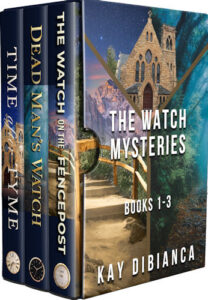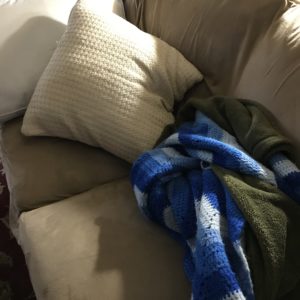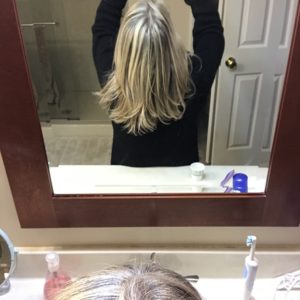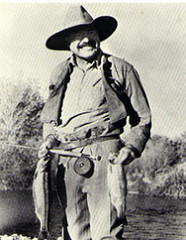Writing Process Problems
Terry Odell
 I’ve finally reached the “I’m home” mindset. Dealt with all the administrivia, household chores, and feel like I’m back in my routine. Which means it’s time for serious work on the wip.
I’ve finally reached the “I’m home” mindset. Dealt with all the administrivia, household chores, and feel like I’m back in my routine. Which means it’s time for serious work on the wip.
This one’s given me more trouble than usual. Normally, my “organic” writing process means I start at the beginning, let things unfold until I hit “the end.”
To quote E.L. Doctorow”
“It’s like driving a car at night. You never see further than your headlights, but you can make the whole trip that way.”
“Planning to write is not writing. Outlining, researching, talking to people about what you’re doing, none of that is writing. Writing is writing.”
Not so this time. I was approaching the 50K word count when I realized the “Bad Stuff” that I’d been writing about happened way to soon, at least for a novel-length work. Even a short novel-length work.
What to do?
I went back and looked at my plot threads and realized I’d left a lot of them hanging around waiting to be dealt with later. I figured I’d better deal with them sooner. Trouble was, fitting chapters (which turned out to be nine) into points well ahead of chapters I’d already written led to continuity inconsistencies.
I’d added the death of a character. That’s what you do when you get to the muddled middle, right?
Unless he shows up alive five or six chapters down the road.
I liked the new chapters and they were moving things along. Until I ran into other inconsistencies. I ended up having to look at my chapter summaries to see when and where things happened. Of course, as expected, things I thought unimportant when doing my summaries turned out to be information I needed later.
Then, there were the decisions to make. Move things around? Leave things where they were but adjust bits and pieces for continuity. Scrap things altogether?
Writing out of order has never been part of my process, but every book is different, and now I had to deal with going back in page time, write the scene, and deal with reweaving the changes into the book so that it would appear seamless.
Of course, the organic writer in me found that one fix led to an entirely new plot thread, which then had to be worked in, often going way, way back in the manuscript to lay some foundations, with slight detours along the way to research things for the new threads. The book covers quite a time spread, much of it not on the page, but accuracy counts.
Also, probably due to my Mississippi River cruise and my recent birding trip, my ability to recall details seems to have left the building. A character talking on the phone to another is noting facial expressions? A character appears riding in another character’s car after said character told him to meet at the house?
Other things I seem to have lost track of. Who said what to which character, and when? Who was in the scene when it was said? It’s as if when the text scrolls off the screen, it leaves my memory, too.
Could it maybe have something to do with time spent processing my birding images? That’s an entirely different skillset, and my brain can’t seem to handle both.
Nevertheless, I persevered, and over last weekend, I had caught up to where I noticed the structure failure and am now working to finish the book. I’m still dealing with the right time to wrap up each thread.
I know I’ll have to be very diligent when it comes time to do my first editing pass. There may be some serious restructuring going on.
And, because I promised to tell you about my birding trip, here’s a link to my Substack, where I did a brief recap.
And a “bird foodie” post on my blog.
If you’re interested in more pictures, you can find them (another work in progress) here.
Your turn. Has your basic writing process ever had to change? How did you deal with it?
New! Find me at Substack with Writings and Wanderings
When breaking family ties is the only option.
Madison Westfield has information that could short-circuit her politician father’s campaign for governor. But he’s family. Although he was a father more in word than deed, she changes her identity and leaves the country rather than blow the whistle.
Blackthorne, Inc. taps Security and Investigations staffer, Logan Bolt, to track down Madison Westfield. When he finds her in the Faroe Islands, her story doesn’t match the one her father told Blackthorne. The investigation assignment quickly switches to personal protection for Madison.
Soon, they’re involved with a drug ring and a kidnapping attempt. Will working together put them in more danger? Can a budding relationship survive the dangers they encounter?
 Like bang for your buck? I have a new Triple-D Ranch bundle. All four novels for one low price. One stop shopping here.
Like bang for your buck? I have a new Triple-D Ranch bundle. All four novels for one low price. One stop shopping here.
 Terry Odell is an award-winning author of Mystery and Romantic Suspense, although she prefers to think of them all as “Mysteries with Relationships.”
Terry Odell is an award-winning author of Mystery and Romantic Suspense, although she prefers to think of them all as “Mysteries with Relationships.”



 Shalah Kennedy has dreams of becoming a senior travel advisor—one who actually gets to travel. Her big break comes when the agency’s “Golden Girl” is hospitalized and Shalah is sent on a Danube River cruise in her place. She’s the only advisor in the agency with a knowledge of photography, and she’s determined to get stunning images for the agency’s website.
Shalah Kennedy has dreams of becoming a senior travel advisor—one who actually gets to travel. Her big break comes when the agency’s “Golden Girl” is hospitalized and Shalah is sent on a Danube River cruise in her place. She’s the only advisor in the agency with a knowledge of photography, and she’s determined to get stunning images for the agency’s website. Like bang for your buck? I have a
Like bang for your buck? I have a 













